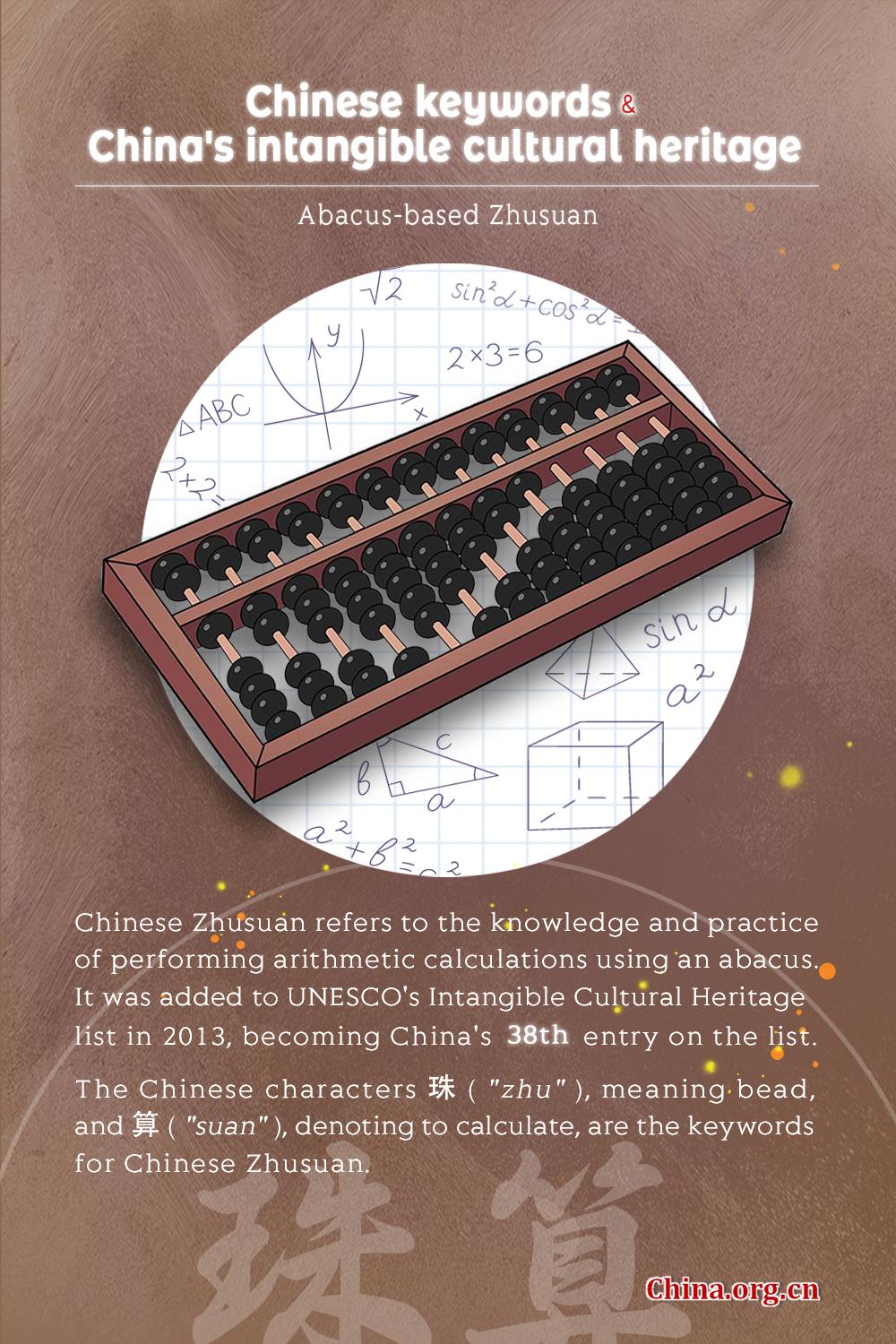Abacus-based Zhusuan and its Chinese keywords
- By Zhou Jing
 0 Comment(s)
0 Comment(s) Print
Print E-mail China.org.cn , August 30, 2023
E-mail China.org.cn , August 30, 2023
Editor's note: Chinese Zhusuan refers to the knowledge and practice of performing arithmetic calculations using an abacus. It was added to UNESCO's Intangible Cultural Heritage list in 2013, becoming China's 38th entry on the list.

The Chinese characters 珠 ("zhu"), meaning bead, and 算 ("suan"), denoting to calculate, are the keywords for Chinese Zhusuan.
Over 1,800 years ago, long before calculators and computers, ancient Chinese invented Zhusuan to do calculations on an abacus, now recognized as the world's most ancient computer.
Practitioners can perform addition, subtraction, multiplication, division and complicated equations such as exponentials and roots. This is achieved by moving beads on the abacus according to specific formulas.
Each bead on the upper deck of an abacus equals five, and each bead on the lower deck equals one. Focusing on the beads, Zhusuan oral formulas are best known for their easy-to-learn rhymes that describe specific calculation rules and summarize arithmetic operations. Beginners can make quick calculations after basic training, while proficient practitioners can use it to increase mental agility.
The practice of Zhusuan has been passed on for generations in China and was also introduced to neighboring countries and regions at the end of the 16th century. It played a significant role in the development of China's first nuclear bomb in the 1960s and remained a compulsory lesson in primary schools in China until the 1990s.
The rise of calculators and computers led to the removal of abacus lessons from the curriculum after the 1990s. However, enthusiasts shifted their focus to mental calculations based on abacus techniques, envisioning the calculation process through an "internalized abacus." This approach is believed by some to enhance a child's attention span, memory and cognitive abilities, leading many parents to advocate for their children to learn it.
UNESCO noted that "Chinese Zhusuan has played a vital role in giving an impetus to mathematical studies, promoting algorithmic practices and fostering intelligence" when listing it as an intangible cultural heritage of humanity.
Today, the abacus remains an auspicious symbol of wisdom and wealth in China. As UNESCO points out, Chinese Zhusuan "has a far-reaching influence in various fields of cultural creativity, including folk customs, language, literature, sculpture and architecture."
Find out more about China's intangible cultural heritage and their keywords:
China's 43rd UNESCO's ICH element: Traditional tea processing
China's 42nd UNESCO's ICH element: Wangchuan ceremony
China's 41st UNESCO's ICH element: Taijiquan
China's 40th UNESCO's ICH element: Lum medicinal bathing of Sowa Rigpa
China's 39th UNESCO's ICH element: Twenty-Four Solar Terms





Go to Forum >>0 Comment(s)